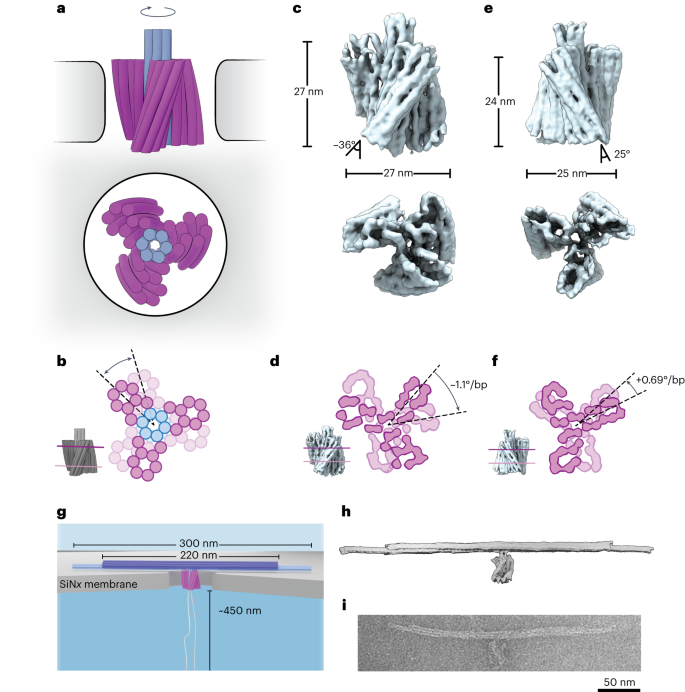2023-10-26 オランダ・デルフト工科大学(TUDelft)
◆この研究は、タービンの回転方向を制御できるようにするために二つのキラルタービンを設計することに成功しました。研究の発見の一つは、イオン濃度に影響を受けるタービンのユニークな回転性で、同じタービンが溶液中のNa+イオン濃度に応じて時計回りまたは反時計回りに回転できる点です。
◆この発見は、ナノテクノロジーの可能性を広げ、医療応用など多くの分野で応用が期待されています。DNAオリガミ技術を使用して、DNAベースの3Dナノオブジェクトを構築し、タービンの回転方向をブレードのハンドネスを介して制御できるようにしました。これにより、生体膜を横断するナノマシンの進化への可能性が広がります。
<関連情報>
- https://www.tudelft.nl/en/2023/tu-delft/dna-origami-nanoturbine-sets-new-horizon-for-nanomotors
- https://www.nature.com/articles/s41565-023-01527-8
ナノポアの膜貫通電位を動力源とするDNAタービン A DNA turbine powered by a transmembrane potential across a nanopore
Xin Shi,Anna-Katharina Pumm,Christopher Maffeo,Fabian Kohler,Elija Feigl,Wenxuan Zhao,Daniel Verschueren,Ramin Golestanian,Aleksei Aksimentiev,Hendrik Dietz & Cees Dekker
Nature Nanotechnology Published:26 October 2023
DOI:https://doi.org/10.1038/s41565-023-01527-8

Abstract
Rotary motors play key roles in energy transduction, from macroscale windmills to nanoscale turbines such as ATP synthase in cells. Despite our abilities to construct engines at many scales, developing functional synthetic turbines at the nanoscale has remained challenging. Here, we experimentally demonstrate rationally designed nanoscale DNA origami turbines with three chiral blades. These DNA nanoturbines are 24–27 nm in height and diameter and can utilize transmembrane electrochemical potentials across nanopores to drive DNA bundles into sustained unidirectional rotations of up to 10 revolutions s-1. The rotation direction is set by the designed chirality of the turbine. All-atom molecular dynamics simulations show how hydrodynamic flows drive this turbine. At high salt concentrations, the rotation direction of turbines with the same chirality is reversed, which is explained by a change in the anisotropy of the electrophoretic mobility. Our artificial turbines operate autonomously in physiological conditions, converting energy from naturally abundant electrochemical potentials into mechanical work. The results open new possibilities for engineering active robotics at the nanoscale.


